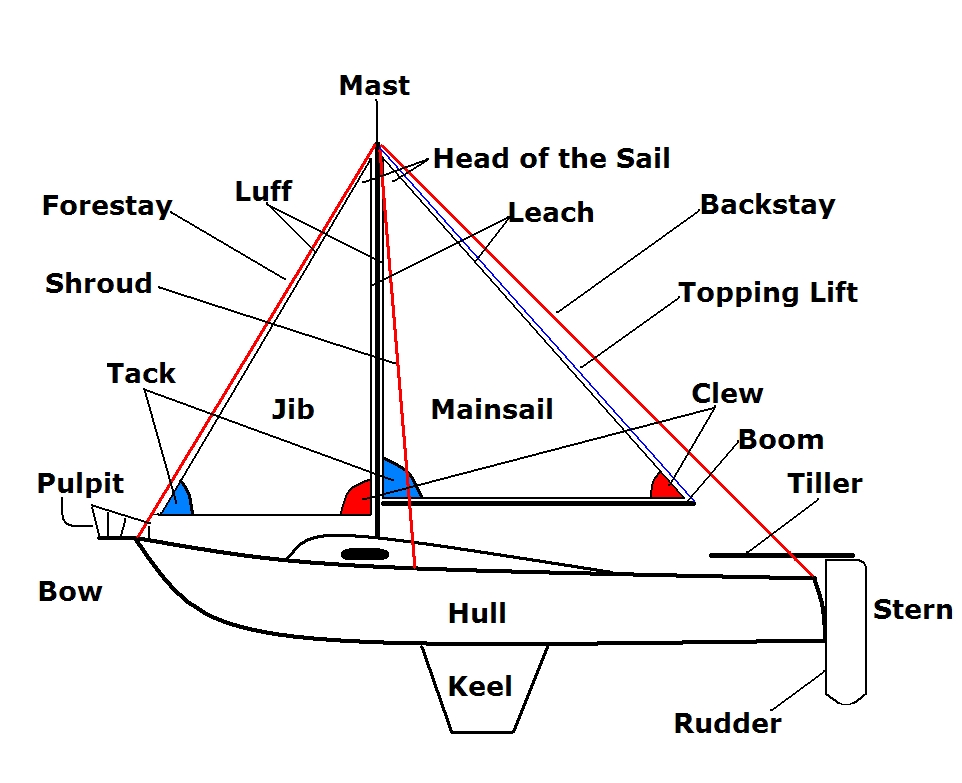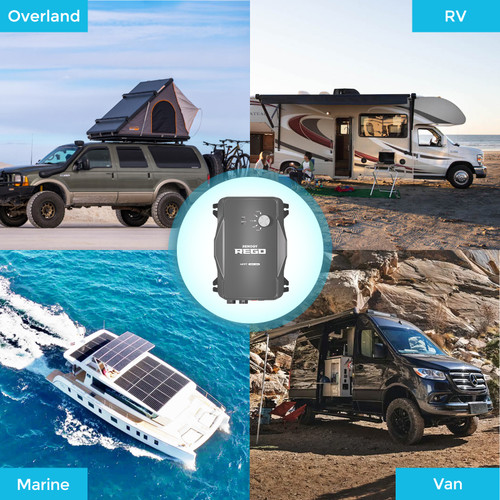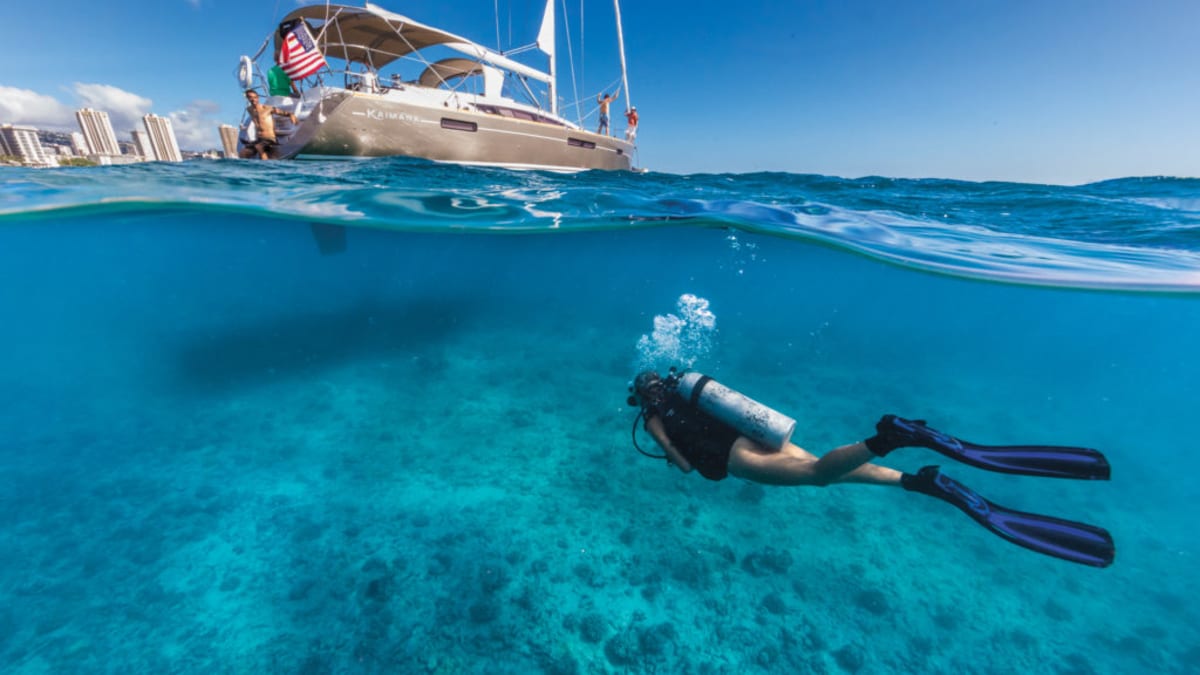Are you looking for the ultimate way to impress your friends on their birthday with your sailing knowledge? Worry no more! This list of the 100 most important sailing terms is just what you need to shine during the next nautical gathering. Get ready to make heads turn and gain the admiration of your peers!
From ‘bell buoy’ to ‘reefing’, this comprehensive collection of sailing terms will make you feel like you know the sea inside out. For sailors, familiarizing yourself with the proper terms is the first step in becoming a pro seafarer. After all, understanding the subtleties and nuances of a nautical language is essential for everyone who wants to reach a higher level of sailing proficiency.
With this list, you’ll never be caught off-guard in conversation. Knowledge is power, and never was this more true than in the sailing world. Whether you’re just embarking on a sailing journey or you’re already a seasoned seafarer, this list is the perfect way to extend your waterside expertise.
Let’s get started!
- Aft: Towards the back of a boat.
- Bow: The front section of a boat.
- Stern: The rear part of a boat.
- Port: The left side of a boat when facing forward.
- Starboard: The right side of a boat when facing forward.
- Hull: The main body of a boat.
- Keel: A structure running along the bottom of a boat, providing stability.
- Rudder: A flat piece of wood or metal used to steer a boat.
- Tiller: A lever attached to the rudder for steering.
- Mast: A tall vertical pole that supports the sails.
- Boom: A horizontal pole extending from the mast, to which the bottom of a sail is attached.
- Jib: A triangular sail set in front of the boat’s mast.
- Mainsail: The main sail of a boat, usually the largest.
- Spinnaker: A large, balloon-like sail used for sailing downwind.
- Tacking: Turning the boat’s bow through the wind to change direction.
- Jibing: Turning the boat so that the stern passes through the wind.
- Sheet: A rope used to control the angle of a sail.
- Halyard: A rope used for raising and lowering sails.
- Cleat: A fitting to which ropes are secured.
- Bilge: The lowest part of a boat’s interior, where water typically collects.
- Anchor: A heavy object attached to a boat by a rope or chain, used to hold the boat in place.
- Furl: To roll or fold a sail up securely.
- Reef: To reduce the area of a sail in strong winds.
- Leech: The back edge of a sail.
- Luff: The forward edge of a sail that is next to the mast.
- Batten: A thin strip of material inserted into a sail to help it hold its shape.
- Beam: The widest part of a boat.
- Berth: A sleeping area on a boat or a place where the boat is moored.
- Binnacle: A stand or housing for the ship’s compass and navigation instruments.
- Bulkhead: An upright wall within the hull of a boat, providing structural support.
- Capsize: When a boat overturns in the water.
- Chine: The intersection between the bottom and the side of a flat or v-bottomed boat.
- Cockpit: An area, typically near the stern, from where a boat is steered.
- Companionway: A set of steps leading from the deck to the cabin of a boat.
- Daggerboard: A movable fin that can be lowered into the water to prevent sideways motion.
- Deadhead: A floating log or other object that represents a hazard to navigation.
- Displacement: The weight of the water displaced by a boat’s hull.
- Draft: The depth of water needed to float a boat, measured from the lowest part of the boat.
- EPIRB (Emergency Position Indicating Radio Beacon): A device that transmits a distress signal in case of an emergency.
- Fathom: A nautical unit of depth, equal to six feet.
- Foredeck: The deck at the front of a boat.
- Genoa: A large jib that overlaps the mainsail, typically used for racing.
- Gybe: Alternative spelling of jibe, meaning to turn the stern through the wind.
- Head: The toilet on a boat.
- Helm: The wheel or tiller used to steer a boat.
- Knot: A unit of speed equal to one nautical mile per hour.
- Lazy Jacks: Lines that help control the mainsail when lowering or reefing it.
- Lee: The side of a boat sheltered from the wind.
- Line: The correct nautical term for a rope.
- Marlinespike: A tool used in rope work for splicing and unlaying ropes.
- Moor: To secure a boat in a particular place with lines or anchors.
- Painter: A rope attached to the bow of a dinghy for tying or towing.
- Quarterdeck: The part of a ship’s deck near the stern, often used as a ceremonial area.
- Reach: Sailing with the wind coming from the side; a point of sail.
- Running Rigging: The ropes or lines that control the movement and position of the sails.
- Scuppers: Openings in the side of a ship or boat deck allowing water to drain off.
- Sea Cock: A valve in the hull of a boat used to admit or exclude water.
- Shackle: A U-shaped piece of metal secured with a pin or bolt across the opening, used to attach ropes, anchors, and chains.
- Standing Rigging: The fixed lines, wires, and rods that support the masts and bowsprit.
- Telltales: Pieces of yarn or fabric attached to sails, used to indicate wind direction.
- Transom: The flat surface forming the stern of a boat.
- Vang: A line or piston system on a sailboat used to control the boom’s angle.
- Waterline: The line where the hull of a ship meets the surface of the water.
- Windward: The direction from which the wind is coming.
- Yawl: A two-masted sailing vessel with the mizzen mast positioned aft of the rudder post.
- Zephyr: A light, gentle breeze.
- Backstay: A rope or wire that supports the mast, running from the top of the mast to the stern of the boat.
- Clew: The lower aft corner of a sail.
- Dinghy: A small boat, often used as a tender for a larger vessel.
- Eddy: A circular movement of water counter to a main current, causing a small whirlpool.
- Fluke: The part of an anchor that digs into the bottom.
- Gunwale: The upper edge of a boat’s sides.
- Heave To: To bring a sailing vessel to a stop by adjusting the sails and rudder.
- Inboard: Closer to the center of a boat; inside.
- Jackstay: A line or wire running along the length of a boat for safety.
- Ketch: A sailing vessel with two masts, a main mast and a shorter mizzen mast.
- Leeward: The direction away from the wind.
- Mainsheet: The rope used to control the angle of the mainsail to the wind.
- Outboard: Situated on the outside of a boat’s hull.
- Pilothouse: A sheltered area on a boat containing the steering wheel, compass, and navigational instruments.
- Quay: A stone or metal platform lying alongside or projecting into water for loading and unloading ships.
- Reef Points: Small ropes used to tie up a sail, reducing its area in strong winds.
- Sheet Bend: A type of knot used to join two ropes together.
- Tack: The lower forward corner of a sail.
- Underway: A vessel that is not at anchor, or made fast to the shore, or aground.
- Veer: To change direction, especially to turn away from the wind.
- Wake: The track of waves left by a boat moving through water.
- Winch: A mechanical device used on boats to wind up rope or cable.
- Xebec: A small, three-masted sailing ship.
- Yardarm: The outer extremity of a ship’s yard.
- Zinc Anode: A piece of zinc attached to the hull of a metal boat to prevent galvanic corrosion.
- Ballast: Weight placed in the bottom of the boat to provide stability.
- Cockpit Drain: A hole or opening in the cockpit allowing water to drain out.
- Downhaul: A line used to pull down sails or spars.
- Furling Gear: Equipment used to roll up and store sails.
- Gennaker: A sail that is a cross between a genoa and a spinnaker.
- Hawsepipe: A pipe in the bow of a boat through which the anchor chain runs.
- Jury Rig: A temporary replacement for a broken piece of equipment.
- Knot Meter: A device used to measure the speed of a boat in knots.
- Lazarette: A storage space in a boat’s stern area.
- Lazy Sheet: The sheet (rope) on the leeward side of a sail not currently in use.
- Mizzen: The sail on the mizzenmast, typically on ketches and yawls.
- Neap Tide: A tide with minimal difference between high and low water levels.
- Orlop: The lowest deck in a ship, often below the water line.
- Poop Deck: The deck at the rear of a ship, typically above the captain’s quarters.
- Quarter: The side of a boat towards the stern, behind the beam.
- Rigging: The system of masts and lines on ships and boats.
- Splice: To join ropes by interweaving their strands.
- Topping Lift: A line used to hold up the boom or a spar when not in use.
- UV Cover: Material used to protect sails from ultraviolet light damage.
- Vang Sheet: A line used in conjunction with a boom vang to control sail shape.
- Warp: To move a boat by pulling on a line attached to a stationary object.
- X Marks: Typically refers to marks on a chart or map indicating significant locations.
- Yard: A horizontal spar from which a square sail is suspended.
- Zulu Time: Another term for Coordinated Universal Time (UTC) used in maritime navigation.
- Backwind: When a sail is unintentionally filled with wind from the front, causing a loss of control.
- Catamaran: A boat with two parallel hulls of equal size.
- Drogue: A device trailed behind a boat to slow it down in heavy weather.
- Ebb Tide: The period between high tide and low tide when the sea level falls.
- Forestay: A supporting rigging line running from the mast to the bow of a boat.
- Gybing Center: The pivot point on a boat when it is turning while gybing.
- Headsail: Any sail forward of the foremost mast.
- Intracoastal Waterway (ICW): A network of protected waterways along the coast.
- Jib Furler: A device for rolling up a jib or genoa, typically located at the bow.
- Kedge Anchor: A lightweight anchor used for stabilizing a boat in moderate conditions.
- Lee Helm: The tendency of a sailboat to turn away from the wind while under sail.
- Mizzen Stay Sail: A sail set between the mizzen mast and the main mast in yawls and ketches.
- Outhaul: A line used to extend the foot of a sail along the boom.
- Pinch: To sail too close to the wind, often causing the sails to luff.
- Quadrant: A quarter of a circle, used in navigation to describe a course relative to the wind.
- Rode: The anchor line and/or chain.
- Slip: A space in a marina or dock where a boat can be moored.
- Tell-tale Compass: A type of compass used in sailing for accurate headings.
- Undercut: A sailing maneuver where a boat passes to leeward of another.
- VHF Radio: Very High Frequency radio used for marine communication.
- Whisker Pole: A pole used to hold out the jib or genoa when sailing downwind.
- Yacht: A medium-sized sailing boat equipped for cruising or racing.
- Z-drive: A type of marine propulsion unit resembling a sterndrive, but with a pod.
- Boom Vang: A device used to control the angle of the boom, hence the shape of the sail.
- Cuddy: A small shelter cabin on a boat.
- Davits: Small cranes on a ship used to hoist boats and other equipment.
- Ensign: A flag indicating the nationality of a vessel.
- Gale: A very strong wind, often classified as force 8 to 10 on the Beaufort scale.
- Hull Speed: The speed at which the wavelength of the bow wave equals the boat length.
- Jibe Ho: A command given to execute the jibing maneuver.
- Knot Tying: The art and science of tying knots in ropes and lines.
- Lubber’s Line: A mark or line on a compass indicating the direction forward parallel to the keel.
- Midship: The middle section of a boat, halfway between bow and stern.
- Navigation Lights: Lights required to be displayed on boats between sunset and sunrise and during periods of restricted visibility.
- Overboard: Over the side or out of the boat.
This list offers a comprehensive look at the world of sailing, the perfect solution for those of us who love the sea and want to have knowledge of the essential nautical terms. Take advantage of this unique opportunity and set sail with confidence!



